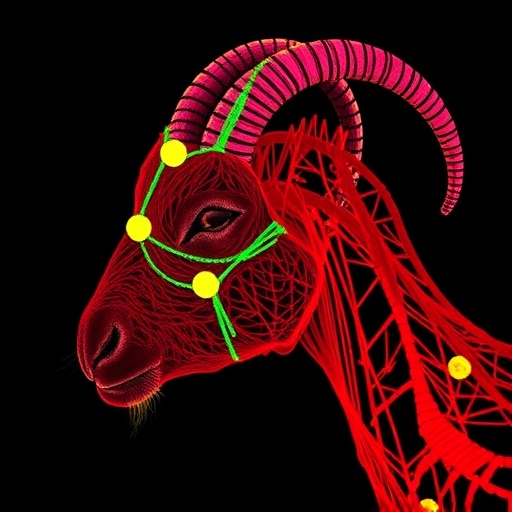In an intriguing study that bridges the gap between aerospace engineering and biomedical engineering, researchers have conducted an in-depth examination of back muscle activity in response to vertical vibrations simulating helicopter flight. The study’s significance lies not only in its novel approach to understanding how human physiology responds to machine-induced vibrations but also its potential implications for improving pilot health and safety. This research offers a pressing look into the unseen struggles faced by helicopter pilots, who endure continuous exposure to vibrations that can have long-lasting effects on their musculoskeletal health.
The impetus behind this study stems from the well-documented adverse effects of prolonged vibrational exposure on the human body. Helicopters, renowned for their ability to access hard-to-reach areas, present unique challenges for pilots that are seldom addressed in rigorous clinical research. With missions often lasting several hours, pilots are subjected to vibrations that can lead to various health issues, including chronic pain and reduced mobility. Understanding how these vibrations affect back muscle activity can pave the way for enhanced ergonomic interventions and training protocols designed to safeguard pilots’ health.
Researchers A.I. Lorente and R.S. Salzar utilized cutting-edge technology to monitor and quantify back muscle activity over one hour of sustained vertical vibration. By simulating a realistic helicopter flight environment, the team was able to emulate the specific conditions that pilots experience during their missions. This setting not only bolstered the ecological validity of their findings but also allowed them to gather accurate data that reflects genuine pilot experiences. The use of advanced electromyography (EMG) techniques enabled the researchers to capture nuanced muscle responses, providing insights into muscle fatigue, activation patterns, and recovery.
One primary finding that emerged from this investigation was the relationship between vibration frequency and muscle response. Different frequencies engender varied muscular responses, which has significant implications for the design and operation of helicopter cockpits. For instance, higher frequencies can lead to greater muscle fatigue, raising alarms about how prolonged exposure might impact a pilot’s ability to perform critical tasks during missions. The implications of this data could inform future cockpit designs, with a focus on minimizing harmful frequencies or integrating more effective seating solutions that better support the spine.
Additionally, the study illuminates the concept of muscle endurance and its association with overall pilot performance. As pilots work under stress, maintaining a certain level of physical endurance becomes paramount. The deterioration of muscle performance due to vibrations not only impacts immediate comfort but could also compromise crucial decision-making abilities during intensive flight operations. This aspect of the research emphasizes the need for comprehensive training regimes that prepare pilots for the physical demands of their roles, ultimately enhancing both their safety and operational efficiency.
Within the realm of aviation and aeronautics, there’s a palpable gap in understanding how extended flight durations influence health outcomes. As the study indicates, pilot welfare is as critical as mechanical reliability. Consequently, aviation agencies have a vested interest in investing in research that promotes the health of operators. The findings could set the groundwork for developing guidelines that protect pilots from the negative fallout of vibrational exposure. Prevention strategies, ergonomically designed seats, and innovative pilot training could emerge from this research to create a safer flying environment.
Furthermore, the approach taken by Lorente and Salzar is not without precedent; a body of literature exists discussing the impact of occupational hazards associated with vibration exposure. However, few studies have homed in on the specific context of helicopter pilots and their unique vibrational exposure circumstances. By filling this void, Lorente and Salzar offer a vital contribution to an area that has historically received scant attention. The study could be the catalyst for expanded research inquiries that explore complementary factors like biomechanical stress and the long-term repercussions of suboptimal conditions for pilots.
The methods employed in this research also represent a technological leap in studying human responses to mechanical stimuli. By leveraging state-of-the-art EMG systems, the team was capable of extensive real-time monitoring, allowing for a rich dataset that captures granular fluctuations in muscle activity. This high fidelity in data acquisition not only provides robustness to the findings but also enhances the potential for translation into practical applications. Future research may consider integrating other modalities, such as imaging technology or biomechanical modeling, to further elucidate the mechanisms behind muscle response in vibration environments.
Acknowledging the interplay between human physiology and machine operation ensures a proactive approach to pilot health. This study highlights the importance of interdisciplinary collaboration, bringing together insights from engineering, physiology, and aviation medicine. Such collaboration could usher in a new era of pilot training, aircraft design, and operational standards. By placing focus on human factors engineering, aviation stakeholders can create systems that prioritize both performance and physical wellbeing.
In essence, the work of Lorente and Salzar signifies a noteworthy advancement in the field of aviation health. With acknowledgment of the vital yet often overlooked role of vibrational exposure, it underscores the necessity for continuous research into operational environments that pilots traverse daily. Ongoing efforts could ensure that the health of those who navigate the skies is backed by an evidence base that shapes policies, guidelines, and best practices.
This landmark study serves not only as a declaration of the challenges faced by helicopter pilots but also as a clarion call for more profound research into occupational health in aviation. While thrilling and demanding, the flight experience must equally prioritize the durability and resilience of those who fly. As newer aircraft technologies arrive, the need to safeguard pilots from physical strain becomes ever more pressing.
Ultimately, understanding back muscle activity during helicopter simulations represents a critical step towards ensuring the future of aviation remains safe, efficient, and considerate of the human element involved in flight. As researchers continue to peel back the layers surrounding vibrational effects on the body, this area marks fertile grounds for ongoing inquiry and discovery, aiming to enhance not only the aircraft but the individuals flying them.
This research initiative conducted by A.I. Lorente and R.S. Salzar is only the beginning of what could emerge as a crucial body of work. Future investigations may delve deeper into how these findings play out across various aircraft types and operational scenarios, creating a more comprehensive landscape of knowledge that ultimately protects and enhances the wellbeing of pilots worldwide.
Subject of Research: The impact of vertical vibrations on back muscle activity in helicopter pilots.
Article Title: Back Muscle Activity During One Hour of Vertical Vibration Simulating a Helicopter Flight.
Article References:
Lorente, A.I., Salzar, R.S. Back Muscle Activity During One Hour of Vertical Vibration Simulating a Helicopter Flight.
Ann Biomed Eng (2025). https://doi.org/10.1007/s10439-025-03868-y
Image Credits: AI Generated
DOI: 10.1007/s10439-025-03868-y
Keywords: helicopter pilots, back muscle activity, vertical vibration, electromyography, occupational health, aviation safety, musculoskeletal health, ergonomics.
Tags: aerospace engineering and biomedical researchback muscle activity in helicopter pilotschronic pain from vibrational exposureeffects of helicopter vibrations on healthergonomic solutions for helicopter pilotsimproving pilot training and wellness programslong-term effects of helicopter flight on bodymonitoring back muscle response in aviationmusculoskeletal health in aviationpilot health and safety interventionsunderstanding muscle response to vibrationvibration-induced injuries in pilots





